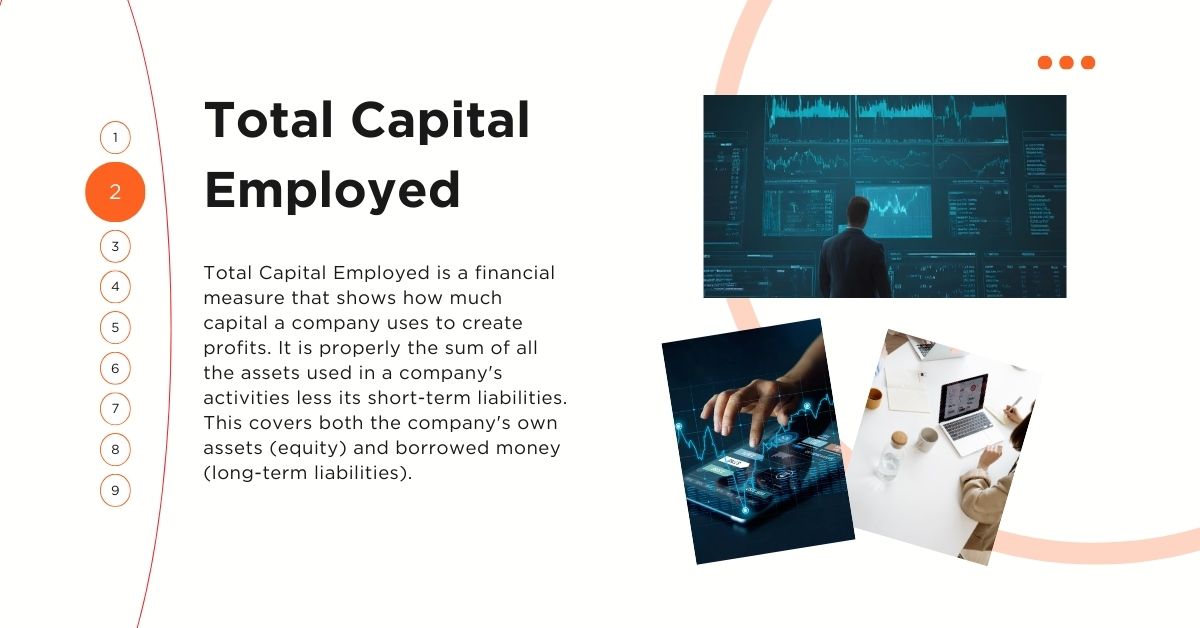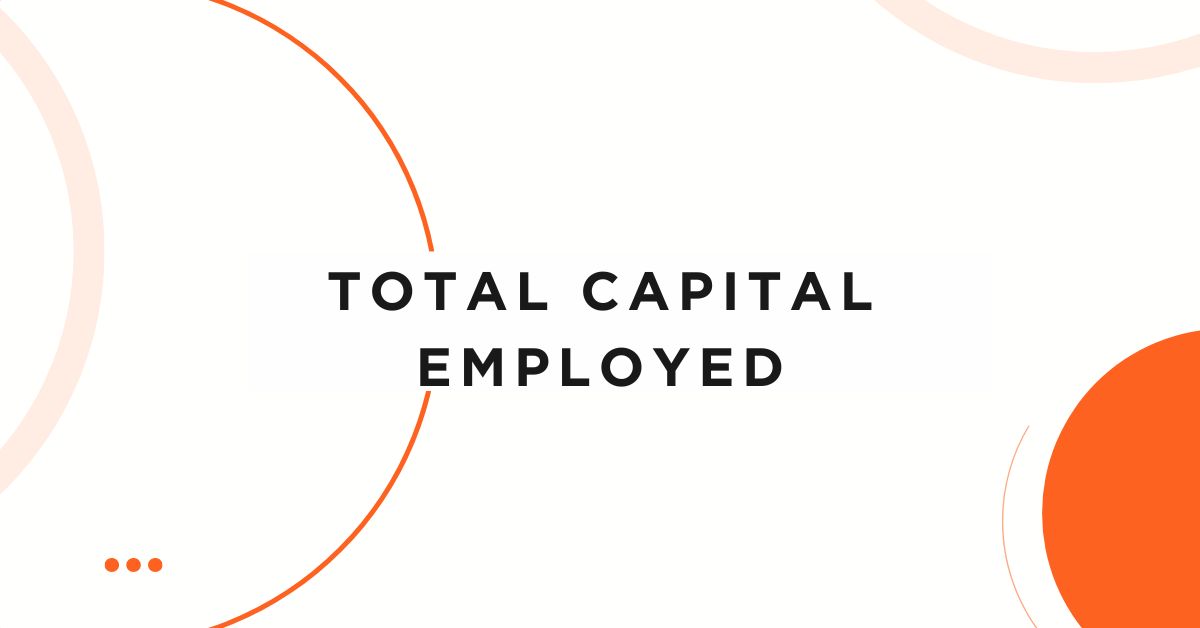The amount of capital invested by a business to run is referred to as its capital employed. It can help determine how a corporation invests its money.
This guide covers all you need to know about calculating capital employed.
What is Total Capital Employed?

Total Capital Employed is a financial measure that shows how much capital a company uses to create profits. It is properly the sum of all the assets used in a company’s activities less its short-term liabilities. This covers both the company’s own assets (equity) and borrowed money (long-term liabilities).
Understanding total capital utilized allows investors and analysts to measure how efficiently a company uses its resources to generate returns. It is an important indicator of a company’s financial health and ability to continue growing.
Formula of Total Capital Employed
Total Capital Employed can be calculated using the following formula:
Total Capital Employed = Total Assets – Current Liabilities
Here’s a breakdown of the components:
- Total Assets: This includes all the resources owned by the company, such as property, plant, equipment, inventory, and investments.
- Current Liabilities: These are short-term debts that the company needs to pay within the next year, including accounts payable, accrued expenses, and short-term loans.
By subtracting current liabilities from total assets, you get the amount of capital that the company is using to generate profits on a long-term basis.
What Is a Good Return on Capital Employed?
Return on Capital Employed (ROCE) is a financial ratio that analyzes how effectively a firm uses capital to create profits. A “good” ROCE varies depending on the industry and the company’s individual conditions. However, a ROCE that is higher than the industry average is generally regarded as positive.
A greater ROCE suggests that the company is making more profit per unit of capital invested, which is generally a good sign for investors. Other factors to consider include the company’s risk profile and the long-term viability of its high ROCE.
What Is Return on Average Capital Employed?
Return on Average Capital Employed (ROACE) is a financial ratio that analyzes the profitability of a company’s capital over a given time period. ROACE, as opposed to ROCE, takes into account the average capital utilized during a certain time period. This provides a more accurate picture of the company’s performance, especially if its capital structure has changed significantly over the course of the year.
To calculate ROACE, divide the company’s profit before interest and taxes (PBIT) by its average capital employed during the period. A greater ROACE suggests that the company is making more profit per unit of capital invested, which is generally a good sign for investors.
What is Total Capital Employed Also Known as?
Total Capital Employed (TCE) is frequently referred to to as Total Assets or Total Investment. It shows a company’s overall investment in its activities. This covers both permanent assets (property, plant, and equipment) and current assets (cash, inventory, and accounts receivable). TCE accurately defines the total worth of the assets that a firm uses to create revenue and profits.
What is Net Capital Employed?
Net Capital Employed (NCE) is the entire capital invested in a company less any liabilities or debts. It effectively represents the total amount of capital that the company’s owners (equity shareholders) hold.
To calculate the NCE, remove the company’s entire obligations (including loans, bonds, and accounts payable) from its total assets. This calculates the net worth of debt-free assets. NCE is an important indicator for analyzing a company’s financial health because it indicates how much of its assets are genuinely owned by shareholders.
Is Total Capital the Same as Capital Employed?
Yes, Total Capital is often the same as Capital Employed. Both words relate to a company’s whole investment in its operations. This covers both permanent assets (property, plant, and equipment) and current assets (cash, inventory, and accounts receivable). The context or industry frequently determines the phrase used.

